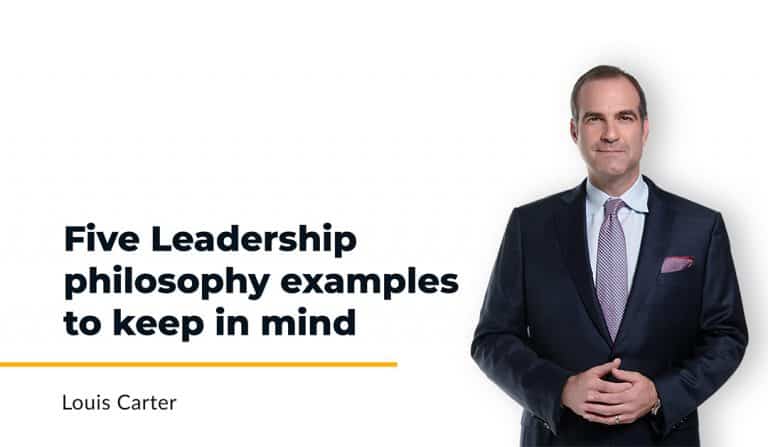Psychological safety is a cornerstone for fostering innovation, collaboration, and employee well-being in modern workplaces. A psychologically safe leader cultivates an environment where team members feel accepted, respected, and free to express their authentic selves without fear of reprimand. Drawing inspiration from critical insights, here are nine best practices to guide leaders in becoming champions of psychological safety.
1. Define Your Leadership Values
At the heart of being a psychologically safe leader lies clearly understanding and articulating your leadership values. Reflect on your leadership mission and core principles. What does your leadership stand for or against? Identifying these values provides a framework for aligning with practices that resonate with your authentic leadership style and contribute to psychological safety.
Professors at Ivy League schools believe psychological safety is interpersonal trust and mutual respect amongst team members. It starts with leaders who define and embody these principles.
2. Inclusivity as a Foundation
Fostering psychological safety begins with building a foundation of inclusivity. Recognize the importance of allowing every team member to bring their authentic selves to work. Our research indicates that a workplace where individuals feel accepted and valued promotes the initial stage of psychological safety – inclusion safety.
There are detrimental effects of “covering” – modifying one’s identity to fit in. Leaders can break down these barriers by championing inclusive practices and creating spaces for authentic sharing.
3. Feedback-Driven Culture
An essential aspect of psychological safety is the establishment of a feedback-driven culture. Honest, fair feedback is fundamental for individuals to progress through the learner safety stage. Leaders should encourage open communication, where mistakes are viewed as opportunities for learning and growth, free from the threat of punitive measures.
Creating a culture where feedback is valued involves teaching employees how to give constructive feedback and fostering an environment where leaders actively seek feedback from their teams.
4. Leverage Consultative and Supportive Leadership
Leadership styles are vital in shaping the team climate. Consultative leadership, where leaders welcome input from their teams, and supportive leadership, which involves caring for team members as individuals, are critical drivers of an upbeat team climate. These behaviors contribute significantly to psychological safety.
5. Emotional Intelligence Training
Leaders can enhance psychological safety by investing in emotional intelligence training for themselves and their teams. Emotional intelligence includes understanding and navigating one’s emotions and those of others. Emotional intelligence training can directly impact psychological safety levels by promoting positive working relationships.
Practical emotional intelligence training, delivered through easily accessible formats like video learning, can contribute to a workplace where team members feel understood and valued.
6. Build Trust
Trust is a foundational element in overcoming challenges associated with psychological safety. Recognizing the evolutionary responses tied to challenges, particularly in the challenger safety stage, underscores the importance of building trust. Leaders can facilitate trust by openly discussing actions that contribute to mutual trust, such as transparency in communication.
Building trust requires intentional efforts, including discussions around specific actions that enhance trust among team members.
7. Measure and Monitor Psychological Safety
Psychological safety is not static; it evolves. Leaders can measure and monitor psychological safety within their teams using a set of questions proposed by Harvard researcher Amy Edmondson. Establishing a baseline enables learning and development teams to offer targeted support and training to address any areas lacking in psychological safety.
Continuously measuring psychological safety ensures that leaders stay attuned to the evolving dynamics within their teams and can proactively address any challenges.
8. Be Intentional in Remote Work Environments
With the prevalence of remote work, leaders must be intentional about creating psychological safety in virtual settings. Regular one-on-one video calls, cross-functional virtual sessions, and deliberate efforts to promote inclusivity in digital interactions are crucial. Remote work does not diminish the importance of psychological safety; it amplifies the need for intentional leadership.
When approached with intentionality, virtual interactions can foster psychological safety by encouraging thoughtful communication and active listening.
9. Cultivate a Growth Mindset
Organizations that cultivate a growth mindset, where failure is accepted as part of the learning process, naturally foster psychological safety. Leaders can work with their teams to establish norms that embrace a growth mindset. Such organizations see increased collaboration, happier employees, and a more innovative culture.
Cultivating a growth mindset involves embracing failure as an opportunity to learn and grow. Leadership and development teams can collaborate to establish and reinforce these norms.
Final Word
As leaders embark on the journey to become psychologically safe leaders, it’s essential to remember that fostering an environment of trust, inclusivity, and growth requires continuous effort and commitment. By embracing these nine best practices, leaders contribute to their teams’ well-being and pave the way for organizational success and innovation.
As you navigate your leadership path, consider exploring the invaluable resources offered in my Leadership Toolkit, available for just $29. This toolkit complements your leadership journey, providing insights, strategies, and practical tools to enhance your leadership skills and create a psychologically safe workplace.
Additionally, I invite you to take your leadership to the next level by joining my exclusive leadership association. For only $29, you can join a network of like-minded leaders, brand yourself as a leader in your field, build essential leadership skills, and become a leadership expert.
Remember, leadership is a journey of continuous growth, and with the right tools and network, you can impact your team and organization. Start your enhanced leadership experience today with the resources and community support available through my Leadership Toolkit and leadership association.






